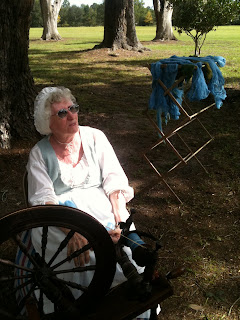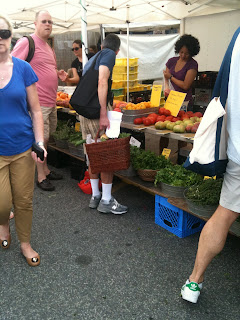December 5, 2011
Winter seems to be upon us here in Northern Virginia. I must say, this place has the strangest weather of all the places I have lived. Last week, it was sunny and 65 degrees when we went to the gym at 7 AM, and then at 11 AM, the clouds had moved in, and it began to sleet.
Things are improving, as the daytime temperatures have stayed consistently lower for the past few days. I just want it to get cold, and STAY cold! The weather needs to make up it's mind!
With the cold weather here, and the choices at the farmer's market becoming more slim, I find it fitting to post our new favorite winter stew recipe. And what is better with stew than homemade cornbread.
I make mine in the "Southern" fashion in a well-seasoned, never "washed" cast iron pan. My Mom usually uses White Lily self-rising cornmeal, which contains the baking soda, baking powder, and about 20% wheat flour/80% whole grain cornmeal. There is never, never any sugar added, and the use of buttermilk is strongly recommended.

Since I cannot buy White Lily products in the DC metro area, I have very happily decided to make a 100% cornmeal loaf using chef John Martin Taylor's cornbread recipe. His ingredients and technique are exactly like my Mother's, with the exception of the flour/cornmeal. I'm using stone-ground, whole-grain North Carolina grown yellow cornmeal that I found at the Ft. Myer Commissary, of all places!
Now for the delicious stew recipe. This stew is packed full of fiber, protein and deliciousness!
Please note that ANY of the vegetables mentioned can be substituted, as I know some things are not always available at the farmer's market, or perhaps some
of you out there have food phobias.

Winter Market Goulash
Ingredients:
1 tablespoon all-purpose flour
1 tablespoon butter or bacon grease
1 pound leftover bison roast, shredded. We like to use a 2 pound slow-roasted bison shoulder roast. We use half of it for this stew, and half of it for chili. Ground beef is OK too, just be sure to cook it before adding it to the stew.
1- 15 oz can of stewed tomatoes
1 medium onion, diced
2 cloves garlic, minced
1 "fist-sized" celery root, peeled and chopped into 1 inch pieces
4-5 carrots, peeled and chopped into 1 inch pieces
1 pound sweet potatoes, peeled and chopped into 1 inch pieces
2-3 medium sized beets, peeled and chopped into 1 inch pieces
1 tablespoon olive oil
1 tablespoon ground cumin
1 tablespoon finely chopped fresh rosemary
1/2 teaspoon thyme, fresh or dried
1/2 teaspoon of smoked paprika
pinch of brown sugar
1/2 teaspoon ground black pepper
1/2 teaspoon kosher salt (or more to taste)
2 cups chicken or beef stock, homemade is best :)
Method:
Preheat oven to 350 F.
Put all of the chopped root veggies (carrot, celery root, sweet potato and beets) onto a sheet pan and toss with 1 tablespoon olive oil. Spread them out for even cooking. Let bake for 30-45 minutes, or until fork-tender.
In a heavy stew pot or cast iron dutch oven on your stovetop-
Cook the flour and fat together on medium heat to make a roux. The roux needs to be between a dark blonde to caramel color before continuing with the recipe. Once the roux has this color--
Add the diced onions and cook on medium-high heat until softened.
Add the tomatoes and chopped garlic, and cook for 3-5 minutes on medium heat.
Add your cooked bison or beef, the fork-tender root vegetables, spices, and salt and pepper.
If the mixture is too thick, add chicken or beef stock for desired consistency.
Let simmer on low heat for 10-15 minutes.
Serve with hot cornbread and butter, and a glass of your favorite red wine. I like a Malbec with this dish. As for a beer pairing, Doug recommends the Dogfish Head Indian Brown Ale.
I am proud to say that most everything for this dish (herbs, veggies, bison, butter, chicken stock) was sourced at the Courthouse Farmer's Market last Saturday. I made the chicken stock a few weeks ago from a locally-raised hen, and I put it in the freezer. The only ingredients NOT sourced locally were the tomatoes (I canned those myself in South Carolina in August), spices, flour, salt and pepper, and olive oil.
This recipe shows that anyone can find a local farmer's market, even at the beginning of winter, and find the ingredients to make something delicious.
The thing to keep in mind is to buy what looks good and then figure out later what to do with it.
Make seasonal dishes with seasonal ingredients.
It's an adventure and a challenge!
























 Downtown Seattle with Mt. Rainier in the distance, as seen from the
Downtown Seattle with Mt. Rainier in the distance, as seen from the 












